- Home
- Herbie Brennan
Through the Wardrobe
Through the Wardrobe Read online
Table of Contents
Title Page
Introduction
Just Another Crazed Narnia Fan
Forgotten Castles and Magical Creatures in Hiding - On Seeing Hidden Things in ...
King Edmund the Cute - Anatomy of a Girlhood Crush
Why I Heart Edmund
Edmund vs. the Other Narnian Men
Edmund Paves the Way for Future Literary Crushes
Reading the Right Books - The Voyage of the Dawn Treader
It’s About a Bunch of People Who Get In a Boat and Try to Sail to the End of ...
Logline: It’s About That “Other” Story
Logline: It’s About a Mouse Who Wants to Find God
Logline: It’s About Life, Death, and Resurrection
Logline: It’s About a Guy Who Everything He Touches Turns to Gold
Logline: It’s About These Invisible Guys with One Foot and How They Get Visible Again
Logline: It’s About a Table of Everlasting Food That You’re (Not?) Supposed to Eat
Logline: It’s About What Happens When You Die
Logline: It’s About All Having Universal Peace Forever
Missing the Point
The Cat’s Meow
Decorating Your Evil Lair
Not Obi-Wan Kenobi
It’s the End of the World as We Know It (and I Feel Fine)
Sure, It’s a Nice Garden, But Does It Have Tomatoes?
I Want a Talking Horse
The Point
The War of Light and Darkness
Eating in Narnia - Or, Don’t Bother Bringing the Sandwiches
Serious Action Figures - Girl Power in the Chronicles of Narnia
In the Kingdom of Calormen
Going to Narnia
Prince to King - Caspian’s First Voyage
Awareness
Faith
Responsibility
L’Etat, C’est Moi: The King Connects to the Land
“Once a King or Queen in Narnia, Always a King or Queen”
Waking Up the Trees
It’s the Little Things
Dissing the Little Creatures
Disregarding the Children
A Mighty Small and Large Lion
The Youngest, Smallest, Tiniest, Truest Truth
Being Good for Narnia and the Lion
Mind the Gap - Are You a Susan or a Lucy?
Copyright Page
Introduction
Something wonderful happens when a group of experienced fiction writers come together to pay tribute to a master. But before we go into that, let me take a moment to introduce those writers to you, in the order they appear in this anthology:
Deb Caletti from San Francisco Bay, now living in the Seattle area . . . Brent Hartinger, who hails from just south of Seattle . . . Diana Peterfreund, born in Pennsylvania, but lived mostly in Florida . . . Ned Vizzini, a Manhattanite who grew up in Brooklyn . . . Sarah Beth Durst from central Massachusetts . . . Herbie Brennan (that’s me), born in Northern Ireland during World War II . . . Diane Duane, a New Yorker, now living in Ireland . . . Kelly McClymer, who started out in South Carolina and now lives in Maine . . . Lisa Papademetriou, a Texan by birth . . . Sophie Masson, born in Indonesia, brought up in France and Australia . . . Elizabeth E. Wein, born in New York City, brought up in England and Jamaica, now living in Scotland . . . Susan Juby from Canada . . . Susan Vaught from Tennessee . . . O. R. Melling, born in Ireland, raised in Canada, now back home in Ireland . . . Zu Vincent and Kiara Koenig, two American authors from the West Coast.
Read their biographies at the end of each article. You could hardly find a more diverse bunch in terms of background, interests, and achievements, but I can confidently predict they all share several things in common: • They all know that magic moment when a window opens up on the word-processor page and allows them to step through into a different world.
• They all meet with spirit creatures (commonly called “characters”) who live, laugh, love, and weep quite independently of the authors who call them up.
• They all recognize plots as fey and fragile things that may work out as planned . . . or take turns the writer never dreamed of.
• They all pray for those golden days when they don’t have to write a word of their own, but take dictation from their Muse instead, creating marvels in the process.
Because they all share these experiences, they bring a special insight—something far beyond mere literary criticism—into the works of another of their kind. And this is especially true when the works in question enchanted them as children.
You may remember the moment yourself, perhaps at Christmas or a birthday, when you opened the package and found yourself staring at a brand-new, lovely book with all its new-book feel and smell. Except it wasn’t a book, not like the books you’d read before. It was a doorway to another reality.
Can you remember how you stepped through that doorway somewhere on the second page? How your worries—the neglected homework, the cross father, the sick hamster—simply faded away? How you met new friends and visited strange lands? How you became the hero of the book?
Very few people realize it, but reading fiction is an interactive experience. The author of the novel does scarcely half the job. You, as the reader, do the rest, painting background scenery with your imagination, filling in the color of the dragon’s eyes, listening to the whisper of the wind, reading the villain’s darkest thoughts. This is a magical process by any rational definition of the term. It involves illusion, creation, healing, transports of delight, silent sounds heard only with the inner ear, impossible sights, wonders, marvels, conjurations.
And the magic reached its peak the day you entered Narnia.
It doesn’t always happen, and regrettably it doesn’t happen often, but sometimes an author crafts a work of such consummate skill that it carries you off to an enchanted realm you will remember to your dying day.
I’m betting your first C. S. Lewis book was The Lion, the Witch and the Wardrobe, but if I’m wrong, it doesn’t matter. Narnia became a living place in Lewis’s mind and he managed, in his writing, to open up a portal so you could come and share it, too. He did this partly by his writing skills, but mainly through his novel’s themes. Narnia is mythic in the true sense of that word, a realm of wonder where humanity’s great stories can be acted out—the sacrifice of heroes, the war of Light and Darkness, the triumph of Good over Evil, the initiation of youth, the wisdom of age, betrayal and hope, but above all, love.
These are things that touch us to the deepest levels of our souls and these are the themes of Narnia. When stuffy academics discuss the influence religion had on Lewis, they talk of something profoundly unimportant. It was not his Christianity that counted, but his archetypal, mythic spirituality that enabled him to reach out across every culture and creed to the children of the world.
A few of the children he reached were a little different from the others—introverted, perhaps, prone to daydreams, sometimes solitary, emotional, and difficult. Such children were swallowed up by Narnia. They found themselves in a place they could describe completely, far beyond the words that Lewis wrote. They found themselves in conversations with the Lion and the Faun that never appeared on the printed page. These were children with a special destiny—to create worlds of their own and let you share them.
Many factors led to the unfolding of that special destiny. We might speculate about parental support, or lack of it, about personal tragedy, meetings with remarkable men and women, encouragement, discouragement, discovery of creative well-springs, travel, opportunity, or just dumb luck. But behind the diverse paths there was always that turning point, that tipping point, that trigger, in the moment when, as children, they op
ened their special book, visited Narnia and were themselves enchanted.
Thus the anthology you hold is something wonderful. It is the work of authors who have, one and all, fallen desperately in love with Narnia, the luminous creation of C. S. Lewis. And it is the work of authors who understand exactly what he went through to bring it into being.
Read and enjoy.
Herbie Brennan
New Year’s Day, 2008
This is where the enchantment began for so many of us. Deb Caletti has produced a richly evocative recollection of her first trip to Narnia, carried there by the set of books she received from her parents for Christmas when she was only ten years old, and describes how the magic was passed on when she had children of her own. . . .
Just Another Crazed Narnia Fan
DEB CALETTI
When I was in the sixth grade, I loaned my copy of The Lion, the Witch and the Wardrobe to Lisa Miller and never got it back.
Not that I hold a grudge.
Lisa had a surgery that required breaking both her legs and resetting them, putting her in a wheelchair for the good part of a year. Flimsy excuse, yes? I mean, this was my beloved and cherished copy, part of the ENTIRE SET of the Chronicles of Narnia that my parents had given me for Christmas when I was ten. An entire set of Narnia books without The Lion, the Witch and the Wardrobe —it’s like an entire set of dishes without the, well, dishes.
I still remember getting those books. For some reason, my mother had hidden them, unwrapped, inside a set of decorative drums that were underneath the Christmas tree. One day I was messing around, as any proper ten-year-old will do, and I opened up the drums. I was shocked, thrilled, surprised, and guilt-ridden at accidentally finding my gift. I knew they were meant to be mine. They had to be. First of all, I was the resident inhaler of books, bringing home stacks of them from the library that I’d consume same as popcorn before the movie even started. Second, they were meant to be mine because they just had to be mine. The covers alone told me so—that castle and the crazed-haired witch; that prince against the orange background, sword drawn against his chest; that magical boat. . . .
Knowing the books were there but being unable to have them yet—it was as if I loved chocolate and was forced to go into See’s Candies with no money and my hands tied behind my back. They waited enticingly, and then, finally, they were mine. There is a hideous Christmas photo from that time—I am in tangled hair and wearing a white nightgown, sitting in front of a purple bike with a banana seat. But it is the books that are on my lap, that my fingertips are touching.
And so, like millions of children around the world, I entered the wardrobe. And once through, I discovered a wondrous land of creatures and adventures and powerful feelings. Ogres and Fauns and frozen places beginning to thaw. Unspeakable evil and goodness so good it brought you to tears. Battles and magic and vials of potions that cured every ill. I wanted to keep pushing through those coats until I reached that place, until I heard the snow crunch underfoot, felt the chill wind, saw the yellow glow of what might have been a lamppost off in the distance.
I read the books out of order, and so my first trip to Narnia was the same as Lucy’s. And, same as Lucy, I would want to tell the others about my trip, all others, but no one would quite believe me until they had experienced it themselves. In addition to thrusting the books on friends, I tried to express my experience through my own writing—a story I wrote when I was twelve should have been named “The Voyage of the Something That Isn’t the Dawn Treader but May as Well Be the Dawn Treader.” It was the tale of a trip to a land with Talking Animals, and proved without question that one could overuse the word “mysterious.”
I revisited Narnia, finding other ways to enter—through a painting on a wall, a magic ring, the Wood between the Worlds. I grew up in the suburbs of California, during the time the “mod” color for appliances was olive green. We had sidewalks and a community pool where you were required to wear a bathing cap. But I disappeared into the eaves of old houses, into an ocean of flowers and islands of dreams, into a land where a great Lion breathed life into animals so that they might speak. In real life, I fought off mean boys who snapped your new bra and smacked you with the small red rubber ball during dodge ball, struggled with my inabilities to do all the things girls seemed to know how to do—spin circles on the bars, lift a cat’s cradle from the fingers of your best friend, chase Larry Hogan, the cute boy. But in Narnia, you could be small and be heroic. Mean boys got what was coming to them. Hurt bodies and hearts were made new. The worst kind of evil, a sledge speeding through snow—even it would stop when spring was allowed back again.
My Narnia love did not stop when I supposedly “grew up.” A fine thing happened, which is that I had children. A fine thing in any case, but an added bonus when they were old enough to sit through a reading aloud, at Christmastime, of The Lion, the Witch and the Wardrobe. All of the expected and great things happened: they listened with wide eyes and begged for more. They cried when Aslan—well, you know—and I grabbed their pajama sleeves and said, “Wait, wait. Don’t worry, you’ll see!” It was as satisfying a reading experience as you could get, so much so that we repeated it the next year, and the next, and I confess here that (as a Narnia fan will do) I carried things a bit too far. I understand, I do, that people who have lockers and are old enough to get their driver’s permits don’t want to sit with their mother on the couch and hear a story they’ve heard a million times, even if she does beg and nearly cry and say, “Pleeeeeeeze!” My children, bless them, as they will do, held their ground, and found other ways through the years to indulge the Narnia fan that made their lunches. They bought me an ENTIRE SET of Narnia books, complete and whole, finally. They took me to The Lion, the Witch and the Wardrobe when the film was released, and my son put together a gift from a San Francisco bookstore for me—a gorgeous, life-sized cardboard wardrobe that was a promotional piece for the film, a wardrobe of endless sections and tabs and slots but with doors that opened and displayed a snowy land and a lamppost that really lights up. He had to cut the bottom off of it to even get it to fit into my office. My kids also participated in a Turkish Delight taste test in our London hotel room. A disappointing affair, I might add. After imagining for years its buttery and mouth-watering perfection, delectable enough to make a boy turn traitor against his own siblings, I was rather let down to find it was actually something you’d want to spit into a napkin.
This is my own story of Narnia love, and it is only one story of eighty-five million others. Eighty-five million! That’s how many books have been sold, anyway, of the seven volumes that make up the Chronicles of Narnia, outsold only by Harry Potter. Eighty-five million—that’s roughly the population of France and Sweden and Switzerland combined, plus a smaller country of your choice. Narnia has an obvious lasting appeal and a devoted following. Devoted, hmm. Crazed might be more accurate. Merely type the word “Narnia” into Google’s narrow rectangle, and a treasure of 12,300,000 hits will pour down upon you like a trove of pirate riches.
Numbers are only part of the picture, though, because devotion, being devotion, generally has no finite number attached. A look at the variety of offerings on the Web gives you an idea of just how hard these books have hit our collective consciousness. Sure, there are book and movie reviews, articles, and products. Amazon alone offers some 4,000 Narnia-related goods for sale, from Sir Peter’s knight shield (very cool), to bookends (have those), to an Aslan marionette (thin, lame, and frankly, a bit strange), to Divan Turkish Delight with Pistachio (I’ve already warned you). And there are plenty of guidebooks and maps, should you make a wrong turn at the lamppost. But what’s most fascinating is the glimpse beyond the consumer harvest, to Narnia fandom at its most pure.
Think of this—you’ve got busy people here (I assume busy, at least busy in that they must make a living and take care of children and remember to let the dog out and go to the bank). And yet you see the countless hours involved in the numerous Narnia fan sites, co
untless spent—not only by the people who create and maintain these sites, but those who visit and contribute. There are reading groups, writing groups, Narnia-related costume parties. Crafts, decorating ideas (my kids would have me committed if I made that bed canopy). There are ongoing lectures and a C. S. Lewis Society (general membership is twenty-five bucks), artists whose life works are based on Narnia scenes, as well as fiction, films, and music created by fans. There’s a Swedish Christian metal band by the name of Narnia, as well as many businesses with its name—a pet-training company, a florist, a kennel. Various vacation spots—cabins and hideaways and tranquil settings suitable for weddings and other special occasions. There are sites where visitors display the Narnia costumes they’ve made and designed, and a Narnia Museum in Wheaton, Illinois, which holds C. S. Lewis’s own boyhood wardrobe, along with his family memorabilia, photos, letters, and more. Five thousand people a year visit.
You can, if you’re inclined, participate in forums on fan sites, tell Narnia jokes, take a Narnia Personality Test. Answer questions like, “Would you consider yourself brave?” (responses from “Quite Timid” to “Very”), and “Be honest, are you at all gullible?” and find out if you’re a White Witch or an Edmund, or, as I learned, a Mr. Beaver (“Despite your size, as Mr. Beaver, you are decisive, confident and bold. You are brave in times of need and show great loyalty to those you respect”).1
You wonder if poor old C. S. Lewis, taking that life-altering walk in the woods with Tolkien (the walk that, legend has it, held the seeds to the Chronicles), could have ever imagined this.

 Through the Wardrobe
Through the Wardrobe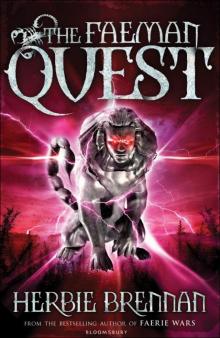 The Faeman Quest fw-5
The Faeman Quest fw-5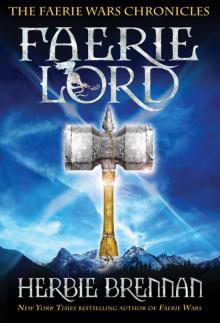 Faerie Lord
Faerie Lord Madame de Gaulle's Penis
Madame de Gaulle's Penis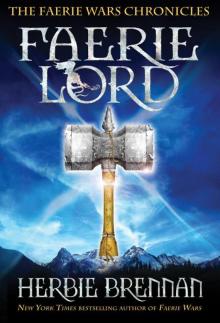 Faerie Lord fw-4
Faerie Lord fw-4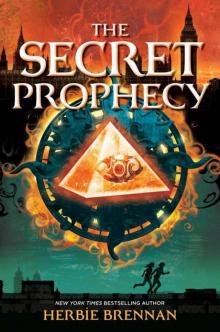 The Secret Prophecy
The Secret Prophecy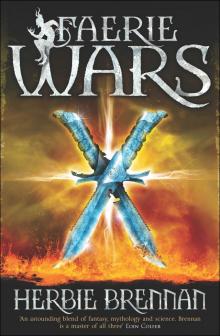 Faerie Wars
Faerie Wars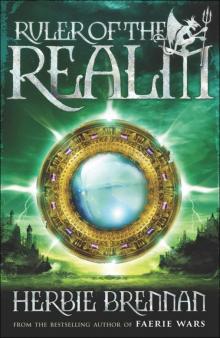 Ruler of the Realm
Ruler of the Realm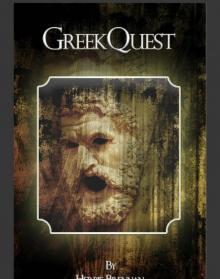 GreekQuest
GreekQuest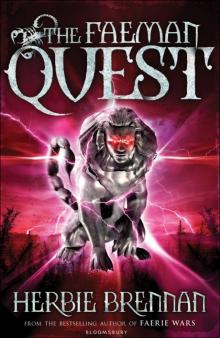 The Faeman Quest
The Faeman Quest The Purple Emperor
The Purple Emperor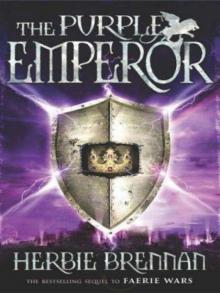 The Purple Emperor fw-2
The Purple Emperor fw-2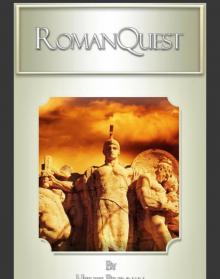 RomanQuest
RomanQuest The Doomsday Box
The Doomsday Box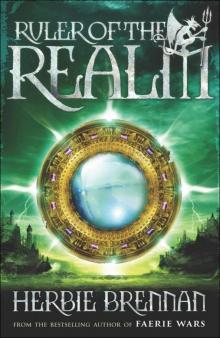 Ruler of the Realm fw-3
Ruler of the Realm fw-3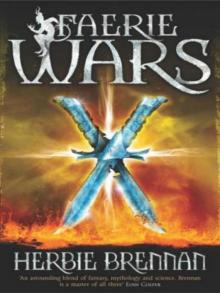 Faerie Wars fw-1
Faerie Wars fw-1